Solved by Ashaleigh Parker 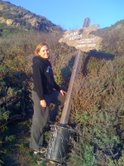
with adventurers John Vonderlin 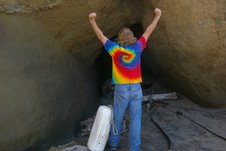
and Larry Fitterer
To read the story: please click here

Created by June Morrall
Solved by Ashaleigh Parker 
with adventurers John Vonderlin 
and Larry Fitterer
To read the story: please click here
In 1906, the rolling hills of San Mateo seemed an unlikely site for an English fox hunt, replete with traditional riding regalia, fine horses and a full complement of hounds. All that was missing was the fox. This did not deter the resourceful Peninsula aristocrats. If local foxes were scarce, coyotes weren’t.
From a distance, the men and women astride galloping horses looked like specks of red and black, impressionistic figures on the San Mateo landscape. Attired in red hunting jackets, white breeches and black caps, they were members of the San Mateo County Hunt Club.
As “master of the San Mateo Hounds,” John Downey Harvey, the 46-year-old president of the Ocean Shore Railway, gathered around him the “regulars.” These members included Harvey’s daughters, Anita and Genevive, his friend, attorney Francis Carolan, banker Richard Tobin and polo players Captain Seymour and Walter Hobart. The Burlingame Country Club was the meeting place for the “drag hunt,” which resembled a fox hunt, except the hounds were trained to follow an artificial scent.
As the riders and their hounds nervously awaited the start of the meet covering 15 miles, none of them dreamed that a month later, the San Francisco earthquake and fire would change many of their lives. The Peninsula’s great water mains would collapse as San Mateo County sustained wide quake damage.
On the Coastside, boulders would tumble over Devil’s Slide into the foaming surf, followed by the twisted remains of the Ocean Shore Railroad’s freshly laid track and expensive rolling stock.
As owner of 13,000 shares of the railway, Downey Harvey was the driving force behind the first railroad to promote a 5 ½ – hour trip as a moving picture ride down the San Mateo County Coastside, featuring views of cliffs, bluffs, beaches, rocks, redwoods and marine scenery.
While the San Mateo County Hunt Club met, Downey Harvey didn’t have earthquakes or any dark thoughts on his mind as his horse “Fawn” jumped the five-foot fences. On the contrary, the railway president felt a burst of energy as the small pack of hounds led the hunters at a galloping speed across familiar terrain: fields bordering banker W.H. Crocker’s home called “New Place;” millionaire executive and future Hillsborough mayor Robert Hooker’s estate; the gate of Francis and Harriet Carolan’s Crossways Farm; the back of the Tevis place, later Jennie Crocker’s home; the golf links of the Burlingame Country Club and the shade trees of “Howard’s Woods.”
Born in Los Angeles on April 17, 1860, J. Downey Harvey was the son of Colonel Walter and Eleanor Harvey. His uncle, John G. Downey, was the seventh governor of California, later a business partner of Alvinza Hayward, whose mansion once stood near Ninth Avenue in San Mateo.
When Downey was 10-years-old, his father, Harvey, died. With his mother, Eleanor, who had married banker Edward Martin, Downey moved to San Francisco. Dubbed “Queen” Eleanor, Downey’s mom became the undisputed leader of San Francisco society for decades, and her home was known as a “fortress of respectability.”
As a youngster, Downey Harvey displayed a “genius” for acquiring friends. In school, he befriended the son of Pio Pico, the last governor of Alta California, who, with his family chose to reside in Los Angeles. Harvey also knew John C. Fremont, a popular, nationally known figure, and a promoter of railroad projects in the West.
In 1883, 23-year-old Downey Harvey married Sophie Cutter; the couple raised two daughters, Anita and Genevive. Sophie Harvey loved music and a full social calendar, yet she managed to run her large household with efficiency.
Along the way, Downey collected all types of friends. from artists and entertainers to business and military men. His aspiration was to become a “clubman.”
By 1895, Downey, an avid sportsman, reportedly laid out Northern California’s first golf course for the San Francisco Golf and Country Club. When he learned that San Mateo County, because of its “undulating pasture without pebbles,” was the best terrain for the hunt, he focused his efforts on helping develop the San Mateo County Hunt Club.
Polo player Walter Hobart had a place in the hunt club’s lore. In 1897, he purchased 38 foxhounds, shipping them from New York to San Mateo for the first “authentic” chase. The San Mateo County Hunt Club members pursued Hobart’s hounds across the fields in a “drag hunt,” the animals chasing a sack of anise seed, a flavoring used in alcoholic drinks called “cordials.” The hunt ended when the hounds surrounded the aromatic sack. Disappointed that their quarry was not alive, the hounds had to be rewarded with stewed beef. As for the hunt club members, they rode back to the Burlingame Country Club for cocktails and dinner, followed by a big party.
Their aristocratic English fox-hunting cousins would have found many deficiencies in the San Mateo club’s version of the hunt. One one occasion the “clever huntsman” Jerry Keating unleashed a large pack of hounds, so many that they were in every field, in every direction.
Making matters worse (or perhaps more exciting), so-called “unauthorized horsemen” (folks who “just” enjoyed riding) put themselves between the hunters and the dogs. Foiling the scent with their steaming horses, they tested the patience of the master of the hunt, ruining the chase.
Ocean Shore Railway President J. Downey Harvey learned from Jerry Keating’s mistakes, and he never brought along too many hounds.
Harvey also did not like to be called by his official title, “master of the San Mateo Hounds.”
“His democratic ideas,” explained a friend, “coupled with his modesty and his kindliness will not allow him to bear the honorable title which means so much to European sportsmen.”
Harvey had always displayed an interest in horses, as did his close friend San Francisco attorney Francis Carolan. Married to Harriet Pullman, heiress to the railroad car fortune, Carolan loved his equine friends, but it was more than just a hobby. Offered top dollar for Vidette, one of the best jumpers in the country, the attorney repeatedly refused to sell his favorite hunting horse at any price.
Upon completion of the Carolan’s Crossways Farm, a Burlingame residence with stables and a private polo field, the couple celebrated with a spectacular party held inside the stables. Flower-draped chartered Pullman cars carried guests–the men attired in red hunting jackets–from San Francisco to the Burlingame farm. Thousands of Japanese lanterns (perhaps to show support for Japan, then at war with Russia) and electric lights lit up the grounds, and a multi-colored chandelier had been installed in the stables, according to the archives of the San Mateo County History Museum. To get a powerful boost of illumination, including a string of lights outlining the house, wires were strung all the way from Burlingame to Redwood City.
Cocktails and supper were served at tables placed near the brightly lit stables; entertainment included a Japanese ballet and Spanish dancers.
The Carolans became famous for the renowned French chateau they built in Hillsborough in 1915 — abandoned by them seven seven months later — when the rattling windows and other annoyances undermined their shaky marriage, causing them to abruptly leave the Carolans and each other.
As a major shareholder of Ocean Shore Railroad stock, it was natural that Downey Harvey would think about the railroad’s difficult construction near Devil’s Slide, north of Montara on the Coastside. Building a railroad along the coast route from San Francisco to Santa Cruz had been strewn with obstacles.
Forty years earlier in 1865, the Atlantic and Pacific Railroad Company surveyed the possibility of a Coastside railroad, creating an air of excitement in Pescadero and Half Moon Bay. Thousands of workers were slated to fell trees, excavate cuts, string bridges and bore tunnels. Suddenly land prices doubled….but the bubble burst, and the railroad was not built.
Millionaire miner Alvinza Hayward, who built a mansion [later turned into a hotel] in San Mateo, spent $17,000 surveying a railroad, doing some grading and securing rights-of-way. His plans suddenly were dropped because of bad investments.
Other planned railroads failed as well. In 1905 the San Mateo Times, fearing interference from the Western Pacific Railroad, called for their choice, the Southern Pacific Railroad (SP) to take action.
The San Mateo Times implored the SP to spend money encouraging a Coastside railroad from Santa Cruz to San Francisco. If they did this, the San Mateo Times held, the SP would shut out “dangerous competition and forever make the counties of Santa Cruz, San Mateo and San Francisco the exclusive territory for the construction of the Southern Pacific railroads.”
The SP'[s engineering department responded that a surveying party had begun, and the company was acquiring the rights-of-way. The SP’s efforts came too late, for Downey Harvey and his independent group of Ocean Shore Railway investors had outmaneuvered the competition.
Inviting guests to his new home, San Francisco Mayor Eugene Schmitz [Image: San Francisco Mayor Eugene Schmitz]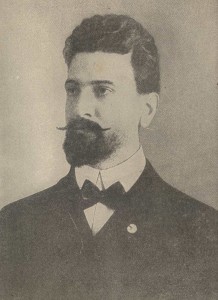
proudly showed visitors a $1,250 Persian rug–a lavish gift reportedly from Downey Harvey, thus greasing the skids for the Ocean Shore Railway being awarded the coveted San Francisco franchise.
In 1906, a month before the earthquake struck, the San Mateo Hunt Club members, hot on the trail of the hounds disappeared into the tree-lined Howard Woods where a “coyote was liberated and killed by the pack.” The hounds backtracked over the same course while Downey Harvey and the other hunters rode to the Burlingame clubhouse where they enjoyed luncheon on the verandah. The day of sport had not ended for polo players Captain Seymour and Walter Hobart; these men galloped off for a polo match at Francis Carolan’s nearby private polo field.
A month later, on April 18, the San Francisco earthquake struck.
(Image from a book called: “Complete Story of the San Francisco Horror,” Memorial Edition. 1906)
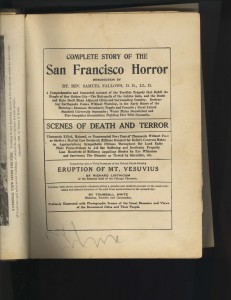
More coming
As president of the Ocean Shore Railway, Downey Harvey convinced San Francisco’s mayor to form a Committee of Fifty to provide relief for the homeless, but his own losses were beyond calculation.
Author Gertrude Atherton wrote that her friend Downey Harvey had invested the greater part of his fortune in the Coastside’s scenic railway–but after the earthquake there was little interest in scenic railroads and new resorts.
The Ocean Shore limped for4ward but the Harveys had lost so much money in the railroad they were forced to live in a sort of retirement for awhile. For the Downey Harveys, such a retirement meant living at Del Monte, the exclusive resort built by the Southern Pacific Railroad at Monterey.
Upon his return to San Francisco, Downey Harvey faced lawsuits resulting from the tragic death of an Ocean Shore train conductor. The OSRR finally closed down about 1922.
J. Downey Harvey, whose affiliations included the Bohemian, Pacific Union, Olympic and San Francisco Golf Clubs, was “the most human of human beings,” said a friend after his death in 1947. “He had the wisdom of a fox and honesty of a sunrise.”

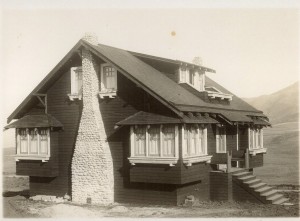
Who is this man with the long white beard? 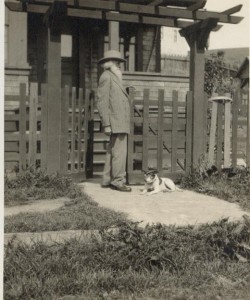
He appears in a number of old Coastside photos, but he’s not been identified. This may be his home; it looks like Moss Beach or Montara. He may be an artist or actor. Can you identify him?
Sociology once seemed to hold many answers for our society.. Sociology students were respected; their work taken seriously. Today sociology is a word rarely heard—or even spoken.
Which takes me back to 1958 and the publication of the brilliant sociologist C. Wright Mills’ book:
The Power Elite
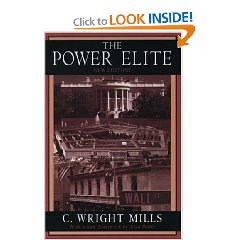
In the 1960s The Power Elite was a popular college textbook In it, Mills’ described our social strata as it was post WWII, and he does so in an informed and entertaining manner (examining the past & present roles of business people, celebrities and the rich to the new influence of the military.)
The Power Elite is a stunning book, published in the 1950s, but relevant today.
This is Katie 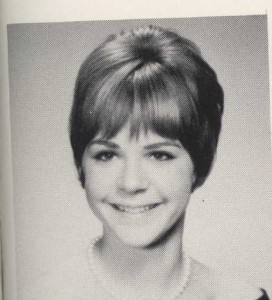
Katie’s lemon tree in southern Oregon. Already turning yellow…


Someday someone will research and write a history of politics on the Coastside. I would hope a book or graduate thesis or MCTV documentary would be entirely objective. Or a report from the Half Moon Bay Review and Coastsider.com. It’s time to do that.
You know how much I love, and more importantly, respect the history of the Coastside. I continue to believe the Coastside is unlike any other place on this earth. The folks who come here to live are just different. Once here, most people do not want to leave. And, if they do, it is with great regret, and they never forget Half Moon Bay.
Usually Americans are on the move. “Everywhere but here,” is the theme. I find that Coastsiders know they’ve got a good thing. Once here, there is no other place as pleasant.
Through my own reading of old newspapers, I’ve been exposed to political stories, but I cannot pretend to know the evolution of Coastside politics.
In early Half Moon Bay, called “Spanishtown” by the locals well into the 20th century, the Coastside had solid local representation. The county supervisors, Messrs. Debenedetti and Francis, were from Half Moon Bay. Everybody knew where they lived and could knock on their doors if they needed help with a problem.
In Pescadero, Dr. C.V. Thompson represented the South Coast. Did you know that until the “Boundary Bill” was passed in 1868, Pescadero was part of Santa Cruz County? It was easier for the townspeople to ride over the mountain to the San Mateo County seat at Redwood City than to wait for an extremely low tide that would allow them to travel to Santa Cruz.
Back then the Coastside was insular, geographically and political. I would say that the Coastside of the late 19th & early 20th centuries was remote, and therefore undesirable for development. As a result, the locals looked to local leaders who hopefully had their best interests in mind.
——
P.S. Back in 1980 when I produced/wrote my documentary called “The Mystery of Half Moon
Bay,” at least one person interviewed talked about secession! That the Coastside could make it on its own. You know, you don’t have to rely on “elected others” to make a difference. Have we forgotten the importance of local leaders? I’m talking about Real Leaders. Not folks who tow the line. Real Coastside leaders. Please give it some thought.
Luna Livolsi is a “Ford” model I recently met in the City. When I started to play photographer, snapping away, I caught this image. When she’s not modeling, Luna fills in as a receptionist. Here she’s answering the phone. In the Spring she’s off for an assignment in Japan.
Lovely, isn’t she?
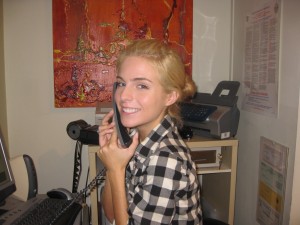

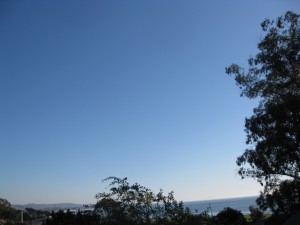
I like this 1980s article by Shirley Zynda, former editor of the “Beachcomber”.
———
By Shirley Zynda
“Like Haley’s Comet (its namesake), THE COAST SIDE COMET AND COAST SIDE NEWS – George E. Dunn, Editor and Proprietor—Is the Sensation of the Day – And If You Want To Real All The Sensational As Well As The More Substantial News Of The County – Most especially of the Coast Side of San Mateo County,” said Mr. Dunn. “Subscribe now.” He also affirmed that “Comet advertisers are reliable.”
Promoting coastside development was the theme of the time. The whole front page is devoted to a rhapsodic description of Farallone City (now part of Montara) and the accomplishments of the Modern Improvement Club. This organization was formed to “assist in restoring the natural beauties of nature that the careless hand of man has defaced and to improve home conditions by such artificial means as to ensure the modern conveniences of life.”
The club cleared the weeds from eight miles of sidewalks, formed a lighting system, established a garbage dump and planned to beautify the City by planting a tree in front of each lot.
The Coast Side Promotion Association also worked to improve home conditions by securing telephone service from Half Moon Bay to Montara, and worked to get electric lighting for the Montara School District which included Farallone, Moss Beach and Marine View (the point where the Moss Beach Distillery now stands.). Members also urged the passage of bonds for boulevards in the county, “one of the most vital things we have to consider for the proper advancement not only for our district but of the entire county.”
Meanwhile the Half Moon Bay Light and Power Company had just been granted permission to increase its capital stock to $100,000 and was offering shares at $25 each. A coupon in the Comet made it easy to become a stockholder and readers were urged “to cut this out and mail it before it is too late.” The company covered “a very large territory extending from San Francisco to Santa Cruz and…although but a short time in existence, the statement of the month of October shows a net profit of several hundred dollars which is a remarkable showing.”
The Ocean Shore Development Company in its ad specified “strict building restrictions, not so much upon cost as upon attractiveness”. Marine View, “Often Called the ‘Catalina of the North'”, was cited for its Scenic Surroundings, Rich Black Soil, Fine Fishing, Marine Reefs Noted for Abalone, Ideal Climate–About 15 Degrees Warmer than San Francisco and the Automobile Highway Already Surveyed.
Ernest W. Jacobs, secretary and Sales Manager of the California Suburban Home Co., professed his greatest desire was to make Farallone City a place of homes. The Montara Realty Development Company advertised that “the future development of San Francisco will be along the Ocean Shore Railroad”, and quoted “the Chicago millionaire Fils” as saying that “the way to make money without working is to buy land near a large city and wait”. The company offered 5, 10, 20 and 100-acre tracts adjoining the townsite.
——more coming—-